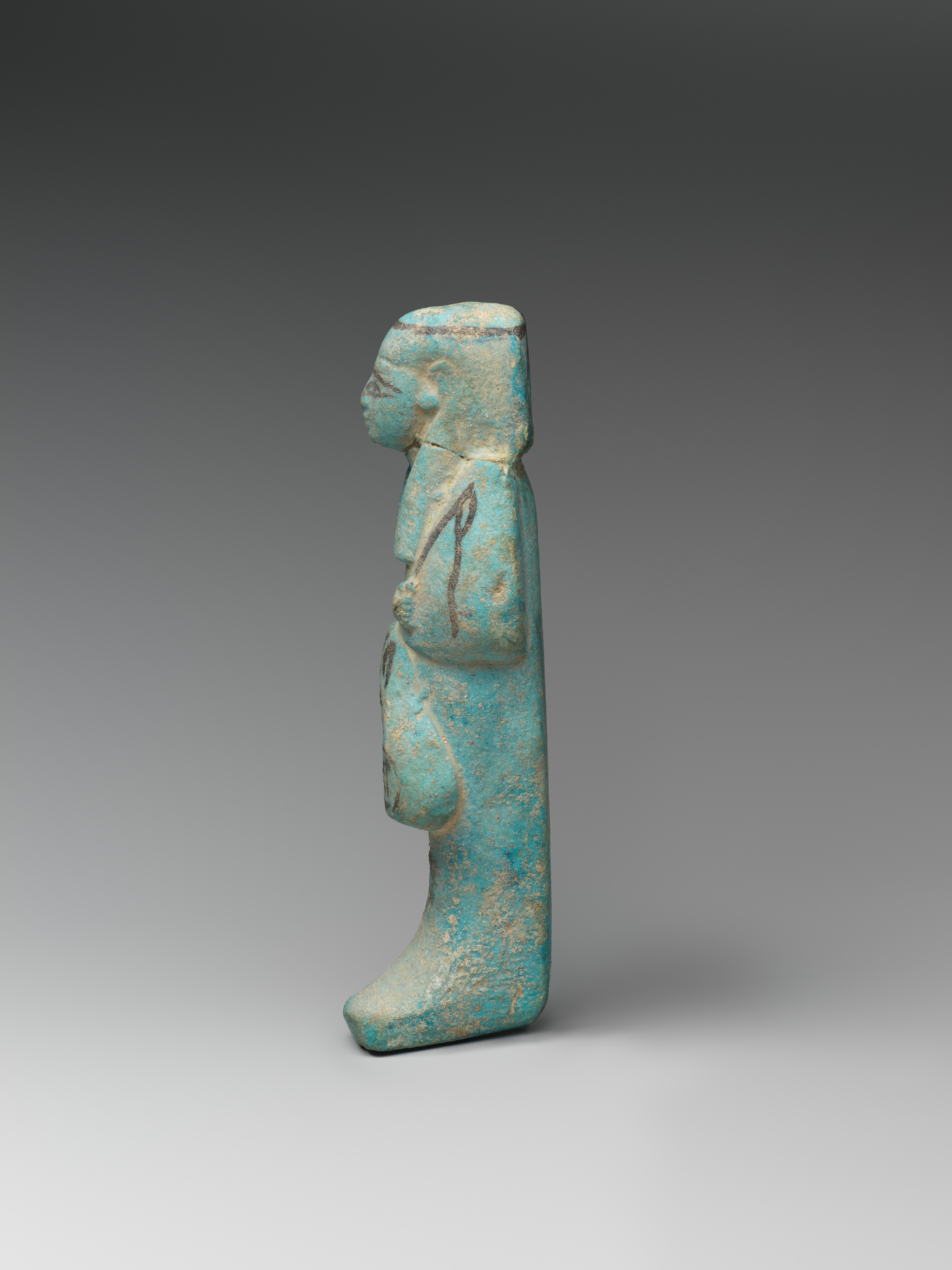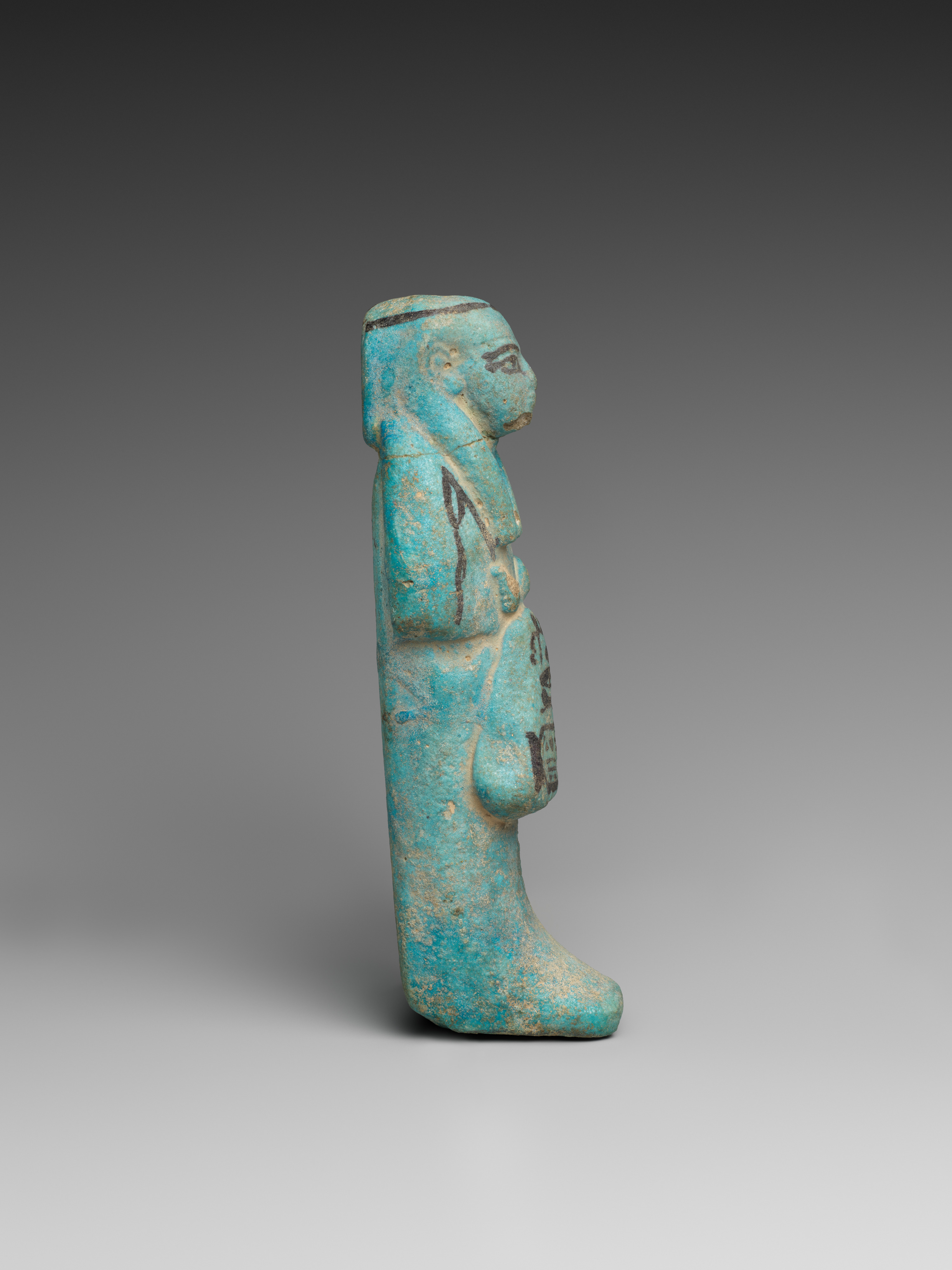Shabti of the Divine Adoratrice, Henettawy
Third Intermediate Period
This figurine, known as a shabti, is inscribed for a woman named Henettawy who lived during the 21st Dynasty at Thebes. During this era, control of Egypt was divided between kings in the north, who ruled from Tanis in the Nile Delta, and the High Priests of the great state god Amun, ruling from Thebes in the south. Henettawy was a member of the extended family of the Theban High Priests of Amun and one of several women in the family with the same name. This Henettawy held the title Divine Adoratrice (written along with her name, inside a cartouche), indicating a very high rank in the female clergy. Given this title, she was probably the daughter of a High Priest of Amun, with Painedjem II and his wife Isetemkheb seen as the most likely candidates.
Shabtis can be seen as avatars of the deceased that could be called upon to perform manual labor in the afterlife. By the 21st Dynasty, as many as 401 shabtis (a worker for each day of the year plus an overseer for each 10-day week) could be included with burials. Worker shabtis can be identified by their mummiform shape and the farming tools they hold, whereas overseer shabtis typically wear a skirt and carry a whip. This particular shabti is an overseer, as can be seen by the protruding kilt and the whip in each hand.
Henettawy is only known from her shabtis, as none of her other funerary equipment has ever come to light. She is thought to have been buried in the storerooms attached to the Ramesseum, a memorial temple to the New Kingdom pharaoh Ramesses II, as this area was reused for high-status burials in the mid-to-late Third Intermediate Period and beyond.
Due to rights restrictions, this image cannot be enlarged, viewed at full screen, or downloaded.
This artwork is meant to be viewed from right to left. Scroll left to view more.





